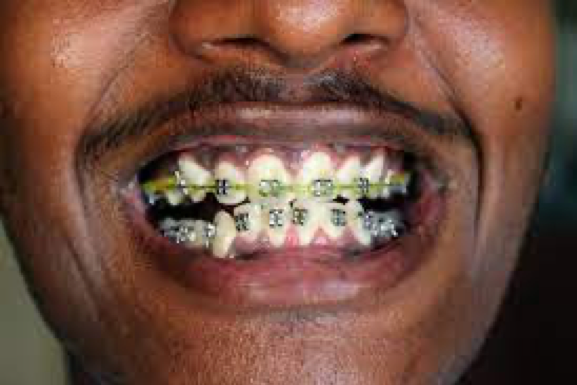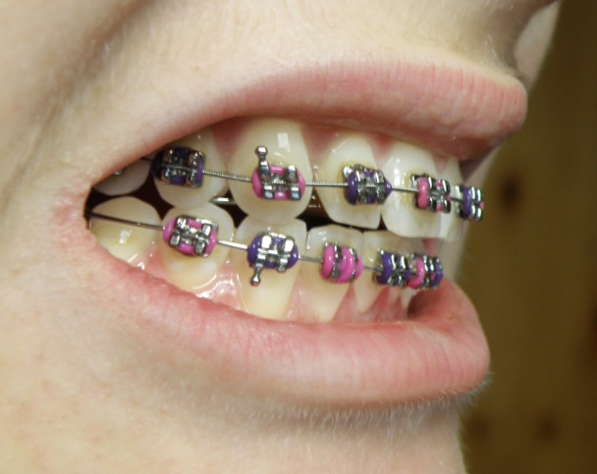All About Adult Braces
Are adult braces common? Nearly 1.4 million adults received orthodontic treatment in the US in 2014, debunking common misconceptions that braces are only for teens and children. The use of braces for adults is becoming more commonplace, and here we will discuss some of the reasons why.

(Source)
Some people have uneven teeth and misalignment that lead to many oral health issues. Degenerating oral health conditions due to crooked and misaligned teeth and/or jaw require you to visit your dentist. Some people focus on reviving their smiling power and appeal. Therefore, adults are seeking the best orthodontic treatments for health and cosmetic reasons.
Complications for Adults Getting Braces
In addition to the many reasons that might make the adult braces difficult during application and post-procedure management, there are other factors. The growth and development of the jaw and gums inside the mouth can make it painful or difficult to install braces.
Many children and adolescents may not wear their braces for extensive periods, and the primary reason for that is that their jaw and mouth are still in the growth stage. Hence, the development makes it easy for their orthodontist to guide the teeth growth and alignment on the jaw.
On the other hand, in adults, the jaw, teeth, and gum are in the mature stage. It means they are permanent and have formed a structure. Therefore, guiding and changing their structure for teeth and jaw alignment get difficult. Occasionally, they wear braces and other similar orthodontic appliances for longer periods.
Types of Braces for Adults
Nowadays, there is an extensive range and types of braces for adults. However, you can narrow down the type of braces you want depending on your oral condition and why you are getting them. For instance, if you need braces for aesthetics, get the ones that are hardly visible and work with other treatments to speed up the results.
Lingual Braces
Like the traditional metal braces, lingual braces help correct teeth and gum misalignment. Your orthodontist will attach the lingual braces to the backside of your teeth, which makes them hardly noticeable.
They are often customizable, but that increases their costs. Still, lingual braces are difficult to clean, maintain, get habitual to, and more importantly, they still involve the need to wear retainers post-treatment.
Traditional Metal Braces
Metal braces consist of a long flexible arch-wire that extends from the last tooth of one side to the last tooth of the other side. An orthodontist installs the metal brackets on one or more teeth as necessary with o-shaped bands to help fix the teeth in their correct position.
They are highly noticeable but are easy to clean, maintain, and require frequent orthodontic appointments to reconfigure the arch-wire setting in the mouth (i.e., when the teeth start moving to the correct position).
Self-Ligating Braces
Self-ligating braces are also similar to conventional metal braces. However, the only key difference is the elimination of colorful o-shaped elastic bands that were previously in use to help correct the tooth’s position.
Now, a single metal door on every tooth helps to hold the arch-wire that enables swift teeth’ movement into the correct position.
Aligners
Aligners are usually plastic and similar material trays that fit right over the teeth (upper and/or lower). They fit perfectly due to the use of 3-D imaging and x-rays. They are expensive, but the price may vary from brand to brand. Some of the invisible braces/clear aligners’ brands offer easy installments after purchase.
What you should know is that these clear aligners might not be easy to accommodate as alternatives to conventional braces. In fact, you have to wear them for no less than 20 or 22 hours a day. You can remove them only when eating and drinking.

(Source)
While drinking water might be easy, other liquids such as white wine, red wine, juices, or other similar beverages will stain the clear aligners. Hence, it adds to the cost and makes them visible.
How Long Do You Have to Wear Adult Braces?
The average time for wearing braces is around one and a half years to 2 years. However, it will depend on the crookedness of your teeth, the procedure that your orthodontist suggests, etc. Your braces will require adjustment to have them fit on your teeth as they start to move into the correct position every few weeks.
After the treatment is over, you will have to wear retainers to prevent the teeth from falling back into the same place and cause another misalignment.
Adult Braces: Conclusion
Is your smile not reflecting your bright personality? Here at NYC Dental Orthodontics, we have some of the best orthodontists in NYC who excel in the application of various different braces. Furthermore, our staff is compassionate and friendly.
Contact us at (646) 760-8028 to get more information about the different styles and methods of braces that our orthodontists offer. Schedule a meeting with one of our orthodontic experts today. You can also visit our official practice website if you want to know more about braces and other dental procedures.
References & Related Links:
https://www.healthline.com/health/dental-health/adult-braces
https://www.health.harvard.edu/healthbeat/are-you-too-old-for-braces
https://www.bbc.com/news/uk-england-49183879
https://orthodonticsaustralia.org.au/whats-different-getting-braces-adult/
https://www.dollarshaveclub.com/content/story/what-its-like-living-with-adult-braces